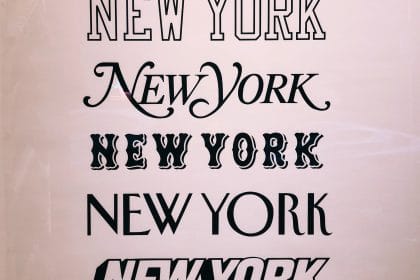A brand book is an outline of your brand’s mission, image, and core values from the more general – what is our purpose? – to the more detailed regarding the logo, color scheme, fonts, and general tone.

A comprehensive brand book provides your team with a clear vision of your company and its product or services. It also guides your team through all their marketing decisions to ensure that no one veers out of the bounds of the established branding elements.
A successful brand book will have the following:
- Brand name
- Outline of the brand story
- Outline of the brand mission
- Brand logo and all its variations
- Color scheme
- Fonts, sizes, and style variations
- Images that reflect the brand
- Brand language
- Communication style: formal vs informal, emotional vs cool, witty vs serious. The “voice and tone” of the brand.
- Social media presence: posting types, times, and styles.
- Email: structure, signature, and tone.
- Readability and grammar: types of sentences, lengths of sentences, capitalization, how do we deal with numbers and abbreviations?
Include both positive (best) and negative (warning) examples in the brand book. For example, if your logo is dark, showing examples of what it looks like on darker backdrops (a negative example) can be helpful.
When your book is full of both positive and negative examples, when the staff encounters a situation that’s new to them, they can refer to the book for guidance on what they should do.
Here are nine guidelines for creating and maintaining a great company brand book:
Assets section
This section of a brand book includes all assets created over time to support branding efforts. These can be old “Brand ABC” manuals from 1999 where the company was working with Times New Roman font in all caps at 11 points on 8½-by-11-inch paper laid four per page. The history of the organization is valuable to chronicle and refer back to.
Memorandum of understanding (MOU)
If there are guidelines outside of a single brand book for legal teams, creative agencies, or any third parties working on behalf of an organization—like standard logo usage guidelines or brand photography rights—those should be documented here too. As a best practice, it’s recommended that organizations write an MOU with everyone they work closely with to keep all guidelines up-to-date and organized in one place.
Brand audit
This section is an assessment of branding that will help to determine what needs updating and where brand builders and brand owners should start working to familiarize themselves with the brand. This can be done by creating a “before” and “after” document so brand builders and brand owners know what to avoid using as well as what elements still exist from the previous version of the brand style guide.
New brand assets
This section of the brand book is updated as brand builders and brand owners develop new brand assets—like updated brand guidelines, logo files, etc.
Brand management document library
A brand book should include links to all relevant brand documents that were developed by brand teams or other parties involved in building or maintaining a brand. This could include press releases, old content marketing creatives, and anything else needed to give marketers an easy way to access documentation and references related to their work with their company’s brand.
Updates
A version number and date should be clearly marked so everyone knows how current the information within the brand book really is! As a best practice, brands should update their brand books every year.
Who can access your brand book?
The brand book should be accessible to the brand builders and brand owners, but also to any parties working on behalf of an organization (agencies, freelancers, etc.). All brand guidelines should live in one place inside of a brand book so everyone knows they can refer to it when making decisions about what is or isn’t appropriate when using the brand’s assets. Accessibility allows approvals to move more smoothly because all brand builders and brand owners have easy access when needed.
Updating your brand book
When organizations create or update their brand books, media relations teams typically create press releases that announce the changes—not just to brand builders and brand owners, but to the general public.
Who should write your brand book?
The brand book will always have a team behind it—like brand managers, design teams, legal teams, and even CX teams (customer experience). But one person is usually in charge of keeping track of what’s updated when and where things stand on brand guidelines. This can be anyone from the company’s head of marketing to an internal communications specialist or PR pro who is most familiar with brand documentation and approvals. The point is that someone needs to be responsible for creating and maintaining the brand book, so everyone knows where to turn when questions arise.



